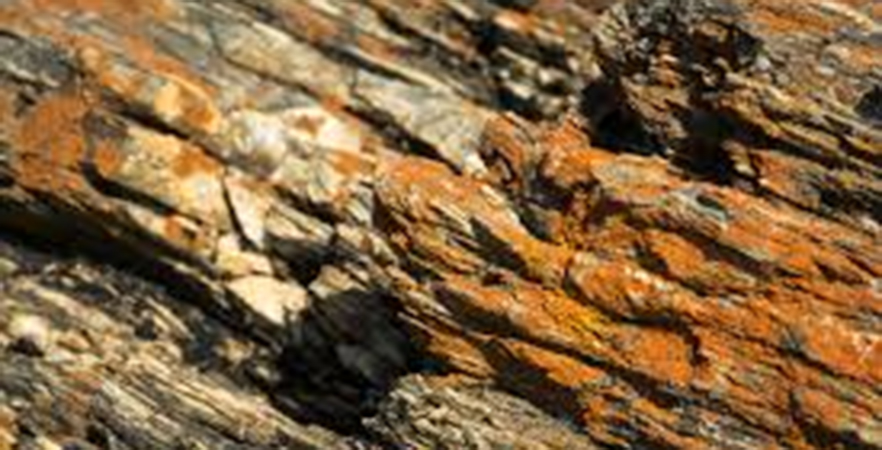Text-critical biblical scholars are often occupied with the arduous, sometimes frustratingly tedious task of studying palimpsests (pronounced ‘paləm(p) sest’). Palimpsests are ancient manuscripts/parchments often made from animal hides in which the original writing has been effaced—usually washed off or scraped off—in order to be reused. Traces of earlier writing remain and are visible, but the overall effect of layers upon layers of writing wreaks havoc with modern hermeneutical excavations. Writing on animal skins was time-consuming, costly and durable, and the process was popular for centuries. Studying palimpsests leaves modern scholars with a richly layered treasure trove of stories and meanings, if we are willing to enter the long and intricately detailed process of going deeper beyond the surface characters and paying attention to what the earlier writing reveals.
For planetary pilgrims, Earth is our most valuable palimpsest. Her deeply textured stories lie in mountain-scapes and ocean floors, riverbeds and old growth forests, oak savannas and coral reefs, rolling fields and vast valleys that host the remains of our ancestors—ALL our ancestors, the wider “We.” This is not to denigrate archeological excavation, geological or oceanic research, but it is a call for a communal awakening to the vast stories embedded in our collective consciousness through the palimpsest of Earth. Our human ancestors mapped their identity, meaning and daily dramas by simply acknowledging that they were enfolded in the stories the land and its wild inhabitants revealed. Place names marked significant encounters with the natural world, and creation itself was the unfolding drama in which humans were merely part—“where the rivers meet,” “bulls run,” “sun mountain,” “rabbits play,” “ice cavern,” “trees quaking,” “wolves calling,” and many others. “Our” story WAS Earth’s story; no need for precise GPS coordinates, exact latitudinal and longitudinal placements, a compass rose, or two-dimensional renderings of trade routes that provided direction for expediency, but lost the rich texture of the stories embedded in the land. A two-dimensional map bereft of embedded place-stories may give us bearing if we look upon the journey and its main objective as merely getting from Point A to Point B. If we see ourselves and our placement in the world as a primary reference point, indeed as the sacrosanct central reference point, “our” stories are hopelessly mired in myopic human navel-gazing. Now that the Anthropocene is receding in the rear-view mirror, we are beginning to recognize that seeing ourselves as the center or the apex of global identity and meaning is both ignorant of and disastrous for the wider “We” of which we are a part. Even the best aerial shots suggesting a third-person, detached, omniscient overview don’t tell the stories of creation dawning, of the roiling of life in all its diverse fecundity, the great web of life that surges through Earth’s fissures and consecrates all our meaningful encounters. We need stories, poetry, art, dance and music rich with metaphors to inspire and captivate us, to remind us how inextricably bound we are with creation. We need, as the A:shiwi (Zuni) people suggest, “counter mapping” (https://emergencemagazine.org/story/counter-mapping/).
 Perhaps it is time to compost the atlas maps of our hyper-productive industry and reconsider the palimpsest of Earth. Maybe it’s time to stop thinking we are “safe” if we know where we’re going, that there’s an end destination that we can conquer, possess or consume. How might we reorient ourselves by listening to the hoot owls and meandering with rivers? What if we knew the interior mapping of our communal soul by the stars, tides and quakes? What if our lives and our children’s lives were measured by the growth and health of our rainforests, the celebration of Earth’s wide communion of other-than-human kin? What if we recalibrate our vocations to the cries of Earth’s waterways and atmosphere, and devoted ourselves to healing the land from toxins we have poured as libations to the gods of productivity, expediency and profit? What if we learned to listen deeply, to see with a beginner’s eye and to rejoice in the stories Earth tells?
Perhaps it is time to compost the atlas maps of our hyper-productive industry and reconsider the palimpsest of Earth. Maybe it’s time to stop thinking we are “safe” if we know where we’re going, that there’s an end destination that we can conquer, possess or consume. How might we reorient ourselves by listening to the hoot owls and meandering with rivers? What if we knew the interior mapping of our communal soul by the stars, tides and quakes? What if our lives and our children’s lives were measured by the growth and health of our rainforests, the celebration of Earth’s wide communion of other-than-human kin? What if we recalibrate our vocations to the cries of Earth’s waterways and atmosphere, and devoted ourselves to healing the land from toxins we have poured as libations to the gods of productivity, expediency and profit? What if we learned to listen deeply, to see with a beginner’s eye and to rejoice in the stories Earth tells?
Where “We” come from might sound different, might feel different, might reflect the stunning panoply of Life that is our cradle and our legacy, if we tune into the wider “We”:
We come from “the lap of Grandmother Oak,” “lying sweetly in butterfly fields,” “resting with river otter …”
We’re heading off to “whistling pines,” “ocean’s tears,” “gentle rain in orchard,” “cloud brightens and sings …”
Our soul is well when We are living in “she sips from cooling stream,” “sapling he grew,” “hope pool,” “desert storm bloom,” and on and on …
The Mother-tongue, Earth’s primary language of love, will reveal who We are, where We’re from, where We’re going and how it is with Our soul, if we learn to go deeper, to listen, to see, to learn.
What is the place-name that best describes where your soul runs to the river and commingles with the Great Sea? Where have your deep sorrows been watered and new seeds planted? Where have you soared with eagles’ wings or laid down in the clover? What melody of the night chorus and the morning refrain frames your days?
Where are We from? Where are We going? How is it with Our soul?
—Laura Weber, Prairiewoods associate director and retreats coordinator


